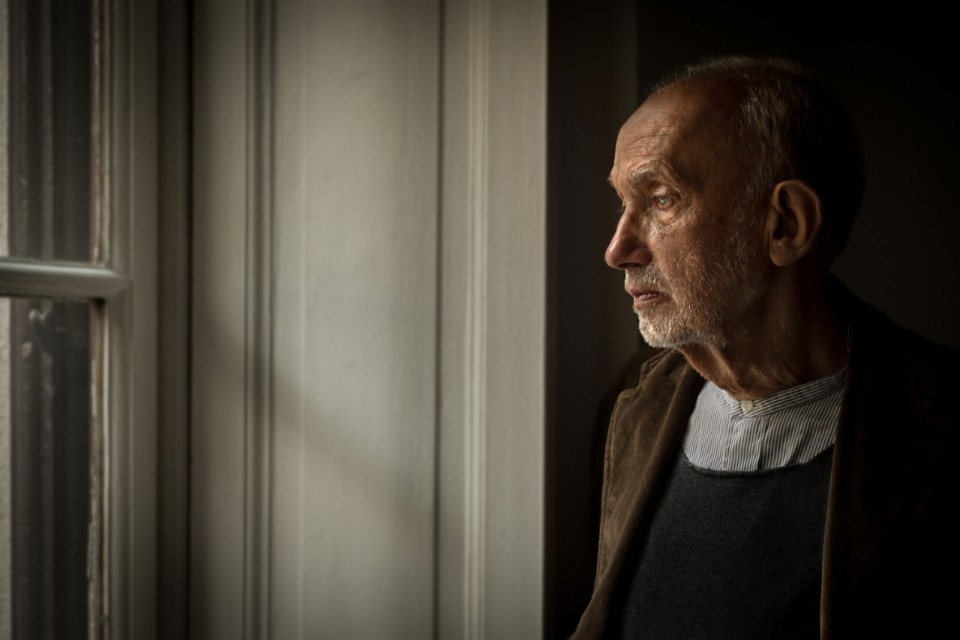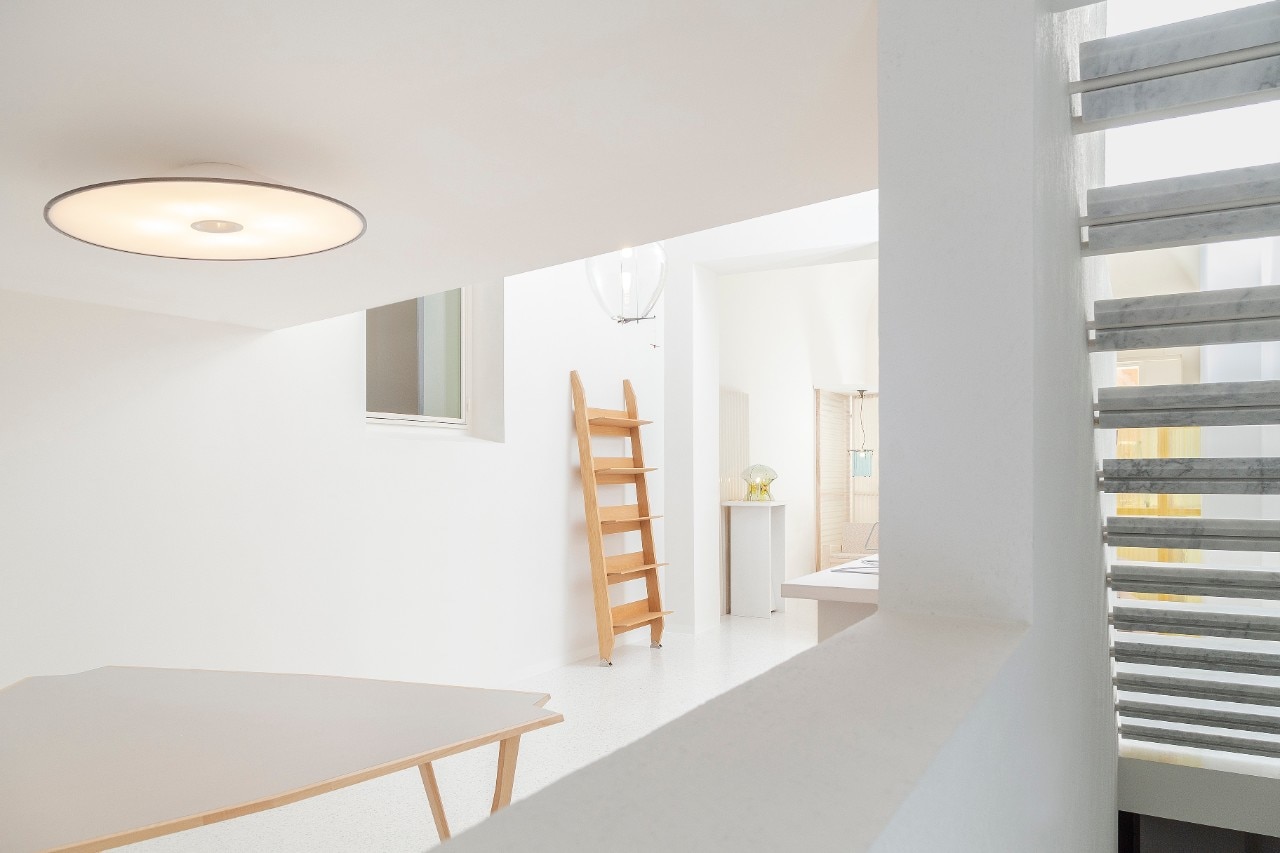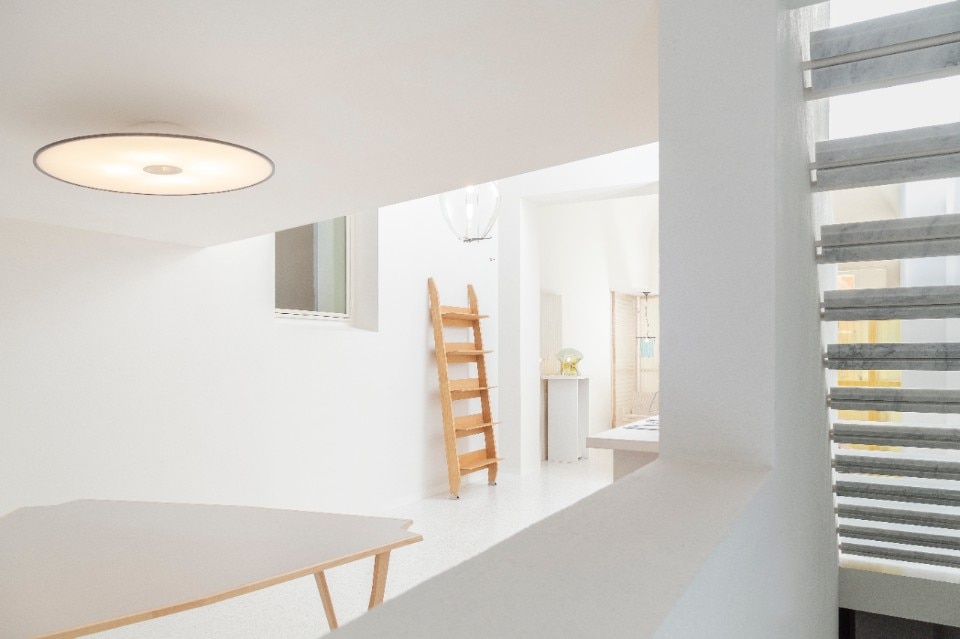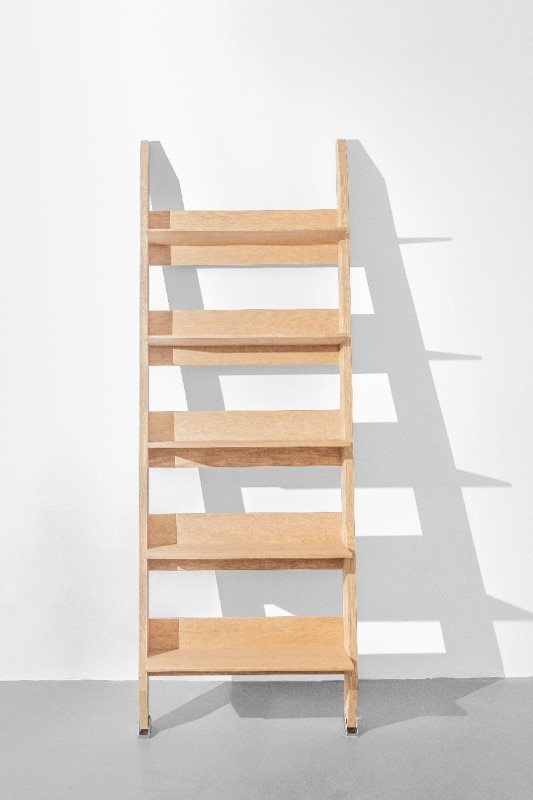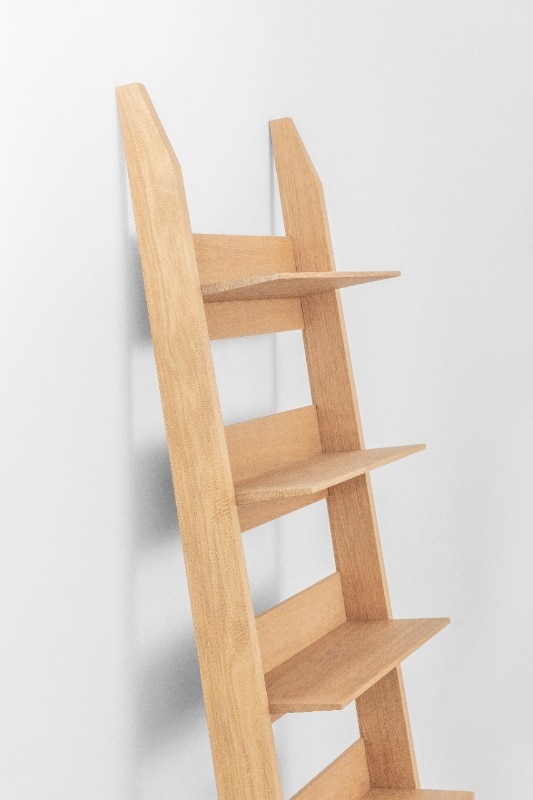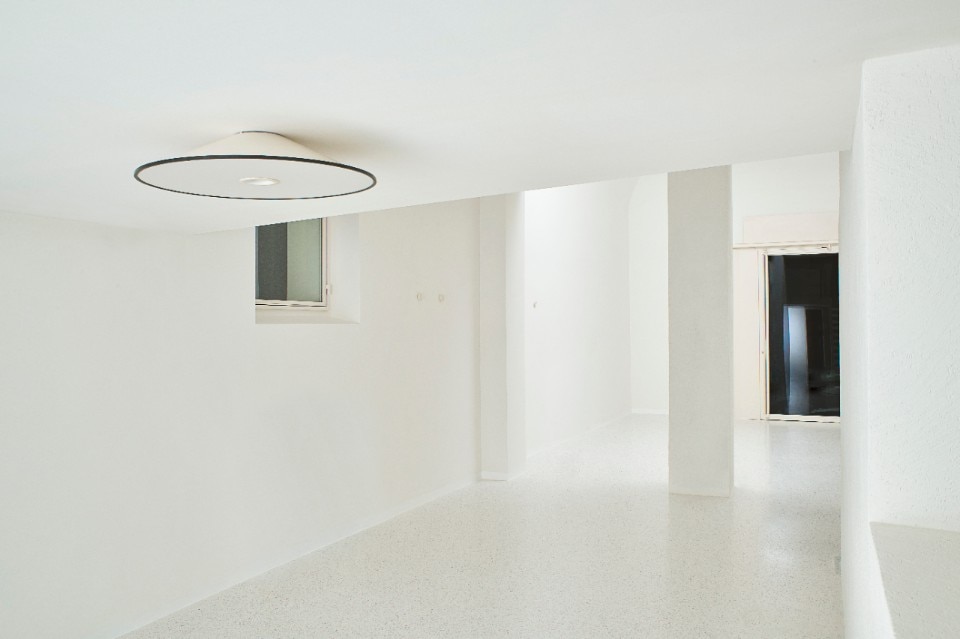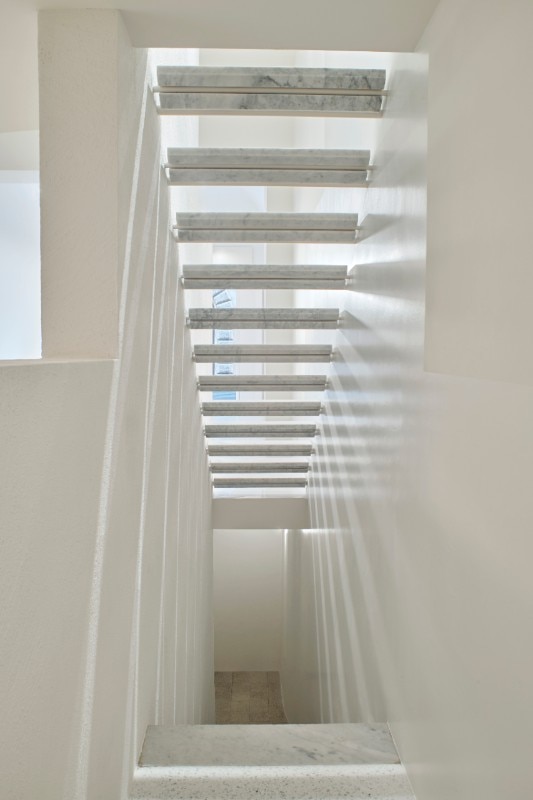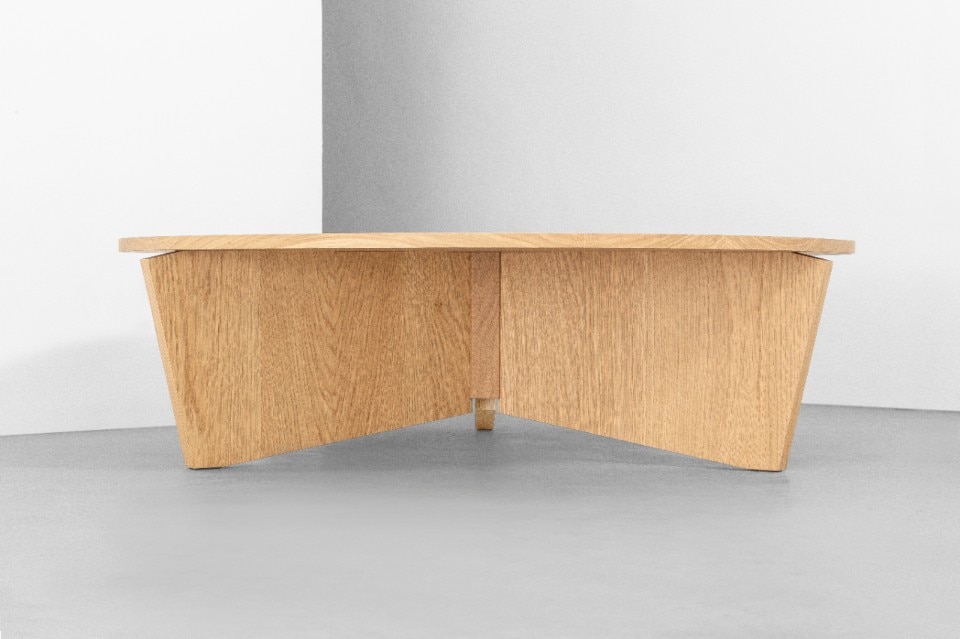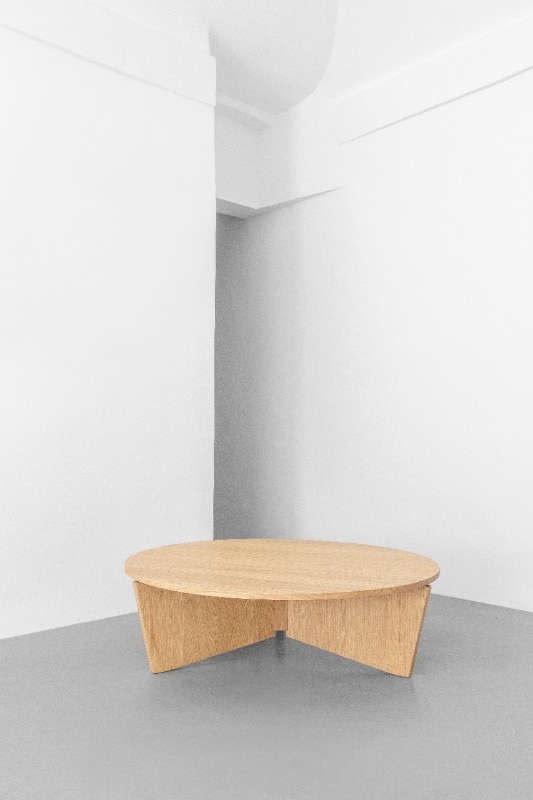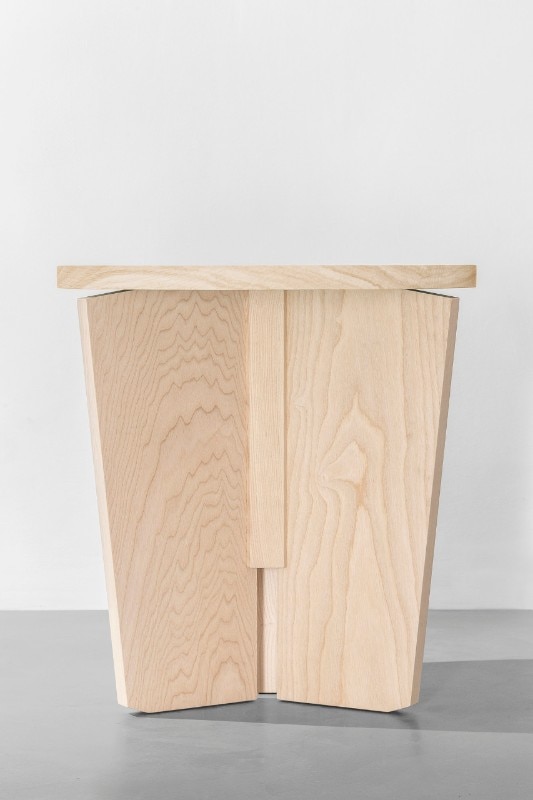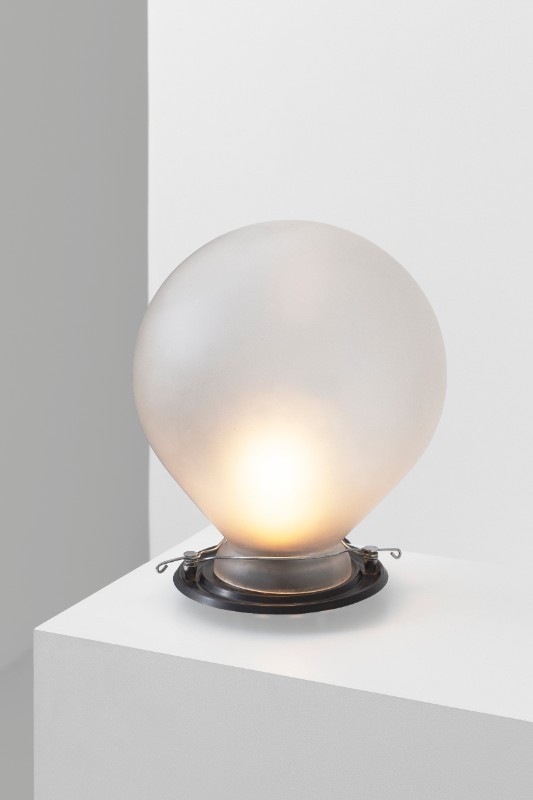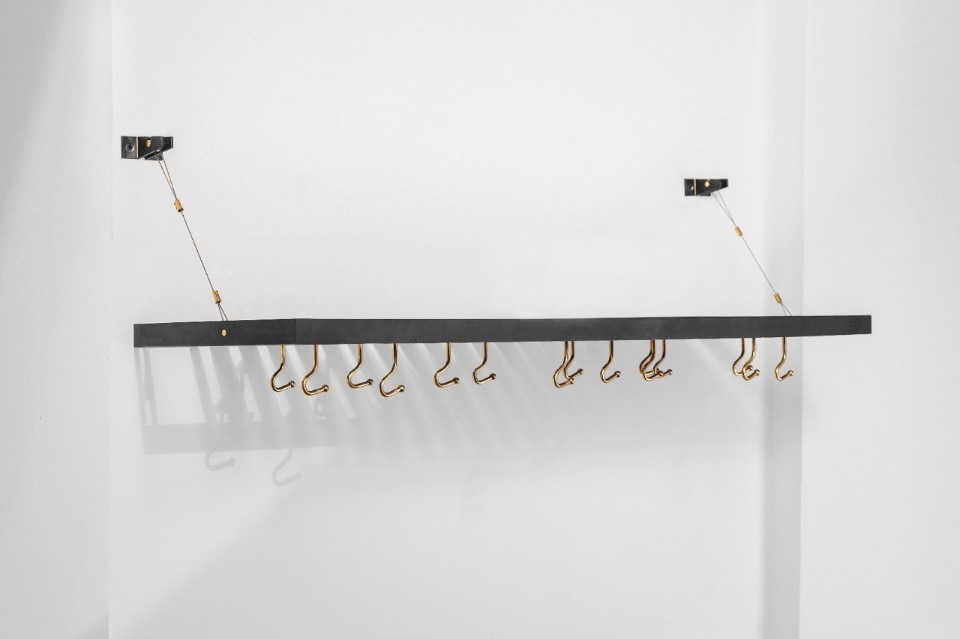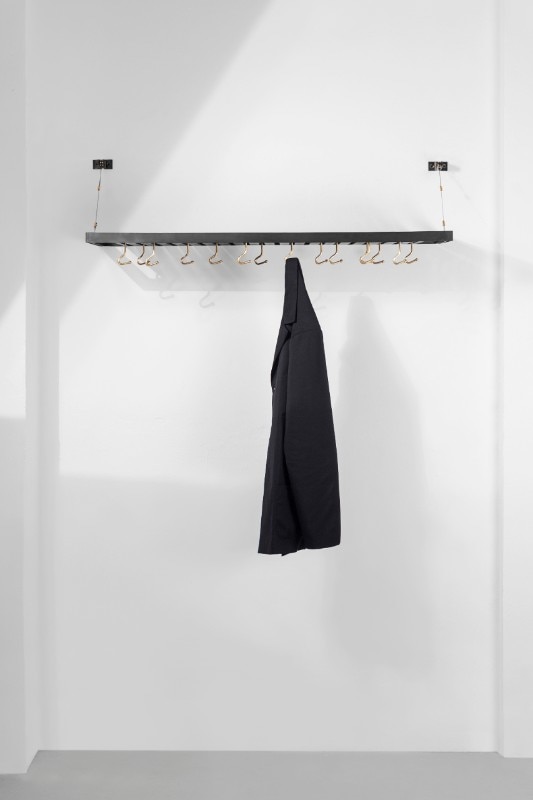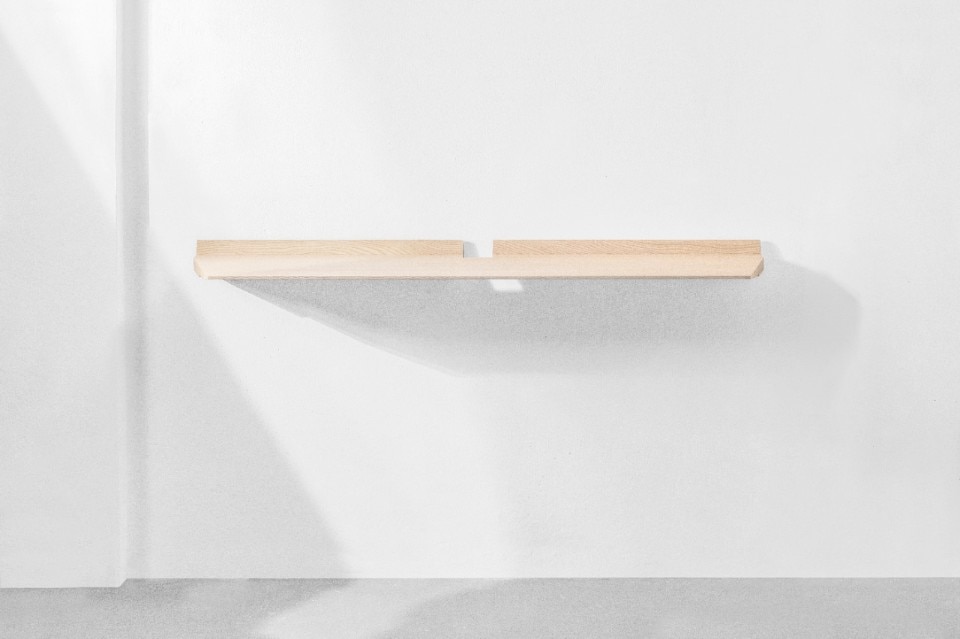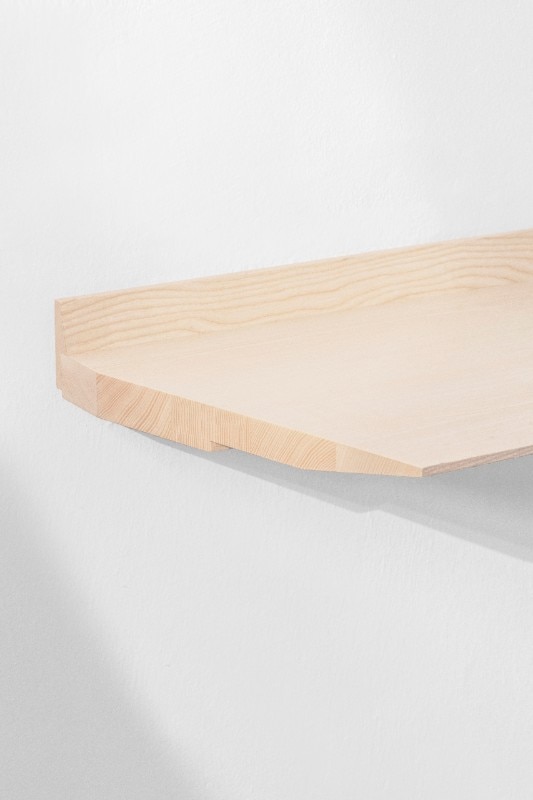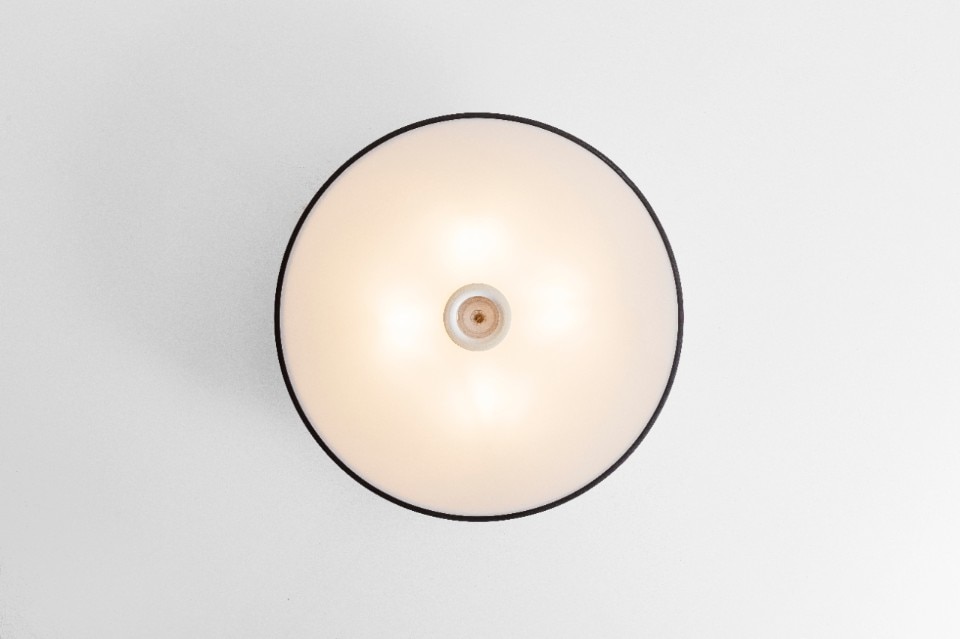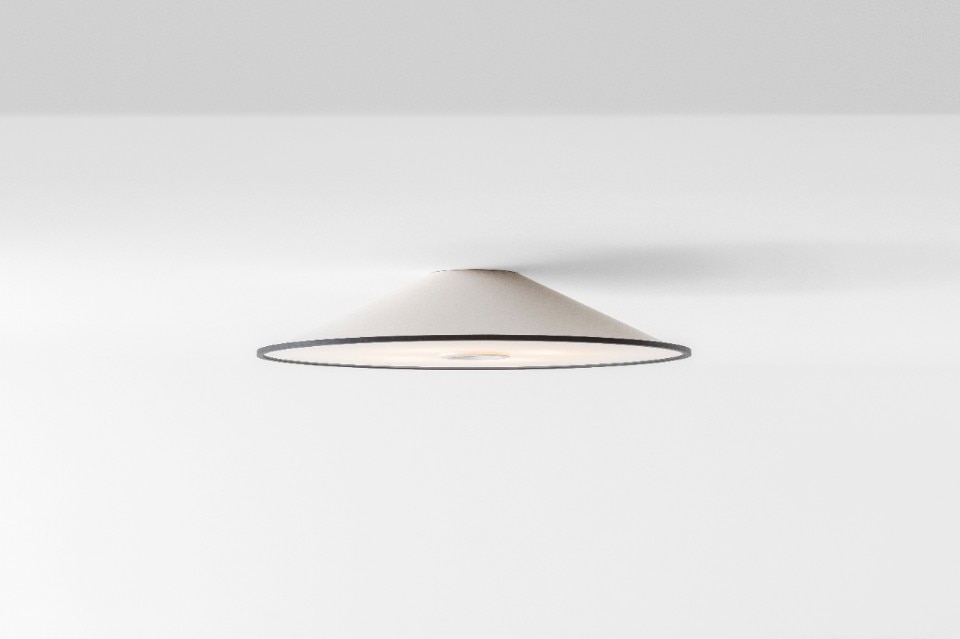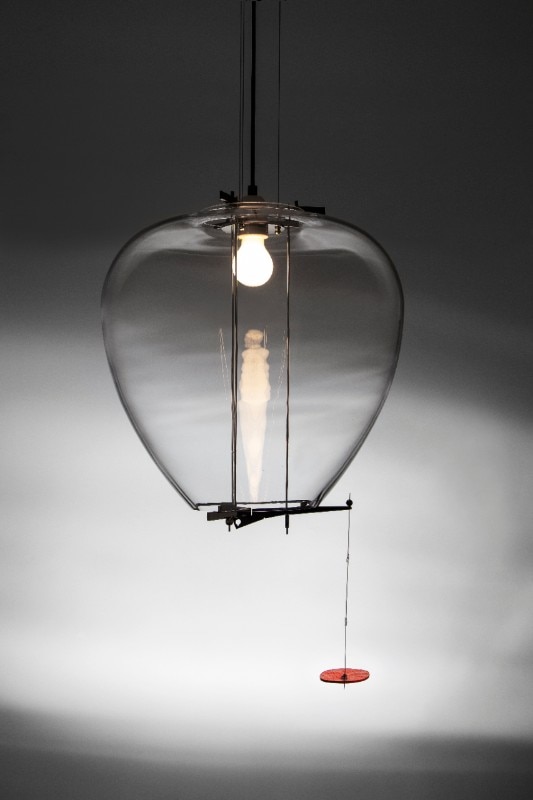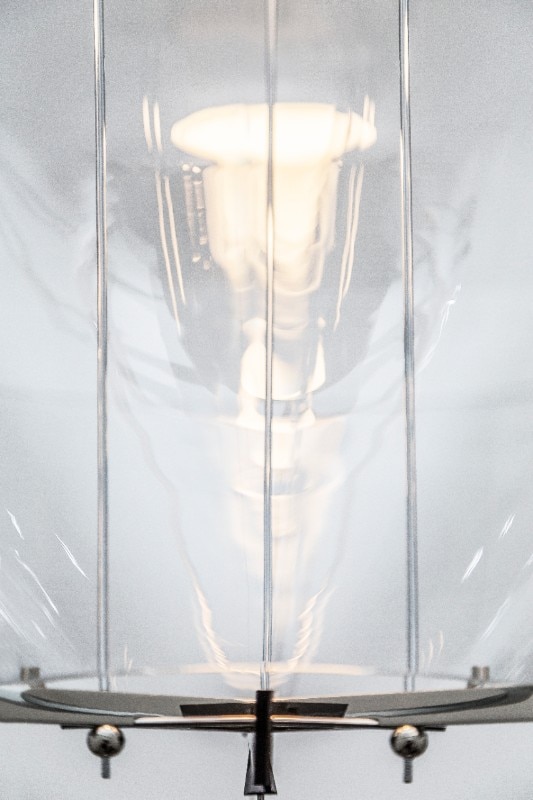This article was originally published on Domus 1071, September 2022.
The last project by Umberto Riva (1928-2021), one of the finest Italian architects of his generation, was the design of the new premises of the Giustini / Stagetti gallery on Via Gregoriana in Rome. Over the centuries, this street has been home to great artists such as Federico Zuccari, Bertel Thorvaldsen and Giovanni Battista Piranesi. Designed together with Emilio Scarano, his right-hand man for over a decade, the gallery is a refined exercise in how to upgrade a small (45-square-metre) and gloomy space, renewed without attempting a fleeting coup de théâtre, but relying on the adroit handling of the three fundamentals of architecture: materials, light and geometry.
By combining Carrara marble terrazzo flooring with enamels and lime plasters with a variable alchemy, Riva made use of light to multiply the shades of white, in a space that is simple yet never banal, given the skilful insertion of clefts, diagonals and slight variations of sections.
The last fruits of a career that spanned 60 years, and that was distinguished by works on every scale, include a series of lamps and furnishings designed especially for the Rome gallery, a quiet haven where Riva, then in his 90s, could express his restlessness as a designer. These works are the outcome of an approach to design developed both within and without the canons of Milanese industrial design, part of an artistic vision in which painting, architecture, interiors, installations, furnishings and objects were all inseparable pieces of a single great mosaic. As he often declared: “Sometimes I feel like I’m always working on the same project.”
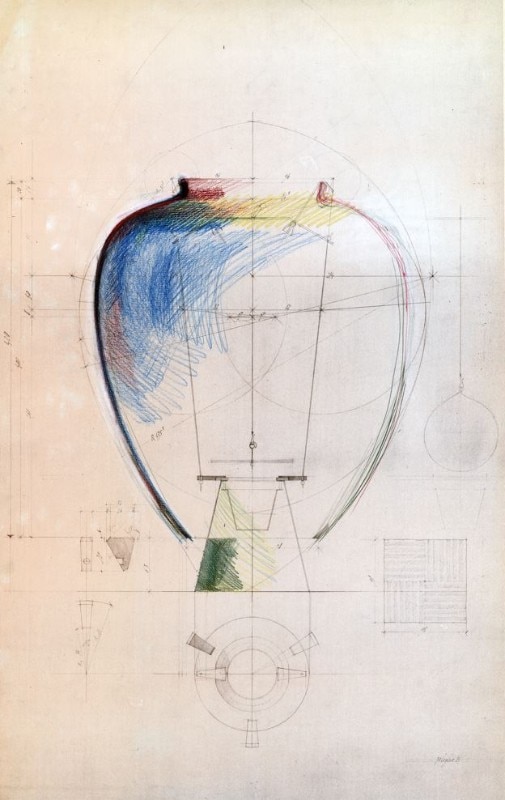
In these pieces conceived between 2018 and 2021, we can trace both stratified signs and new insights stemming from the obsessive questioning of design principles, forms and materials. Wood first of all. His intimate mistrust of the right angle, for example, led him to shape trapezoidal legs resembling interlocking splinters (the To-Tondo side table) and legs hollowed out like miniature hulls (the Tav 1 dining table).
Threes, an odd, dynamic and Borrominian number in spirit (the gallery is close to the Church of San Carlino), recur in many of his lamps, from the beginnings to the Sud-Est, which Riva imagined as a tribute to Paul Klee. Even the Pisa bookcase flaunts its mistrust of classic quiet, resting on two hinges on the ground so that it can lean against a wall. An ash-wood console, shaped like a knife, transfigures a shelf into an aerodynamic blade capable of orienting space: design is architecture, and vice versa.
Finally there is Appesa, the heir to the Veronese lamp, a masterpiece designed in the 1980s for Barovier & Toso. It enriches blown Murano glass with blacksmith’s fittings, combining the teaching of Carlo Scarpa and Franco Albini, two of his many masters, reinterpreted in personal, eccentric and nonconformist objects. Always working on the same project, day by day in new ways, cultivating the practice of doubt in an age of fragile certainties
